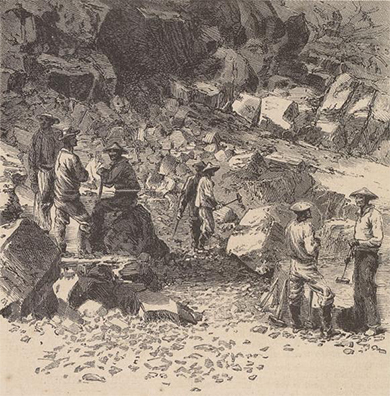| << Chapter < Page | Chapter >> Page > |
As white Americans pushed west, they not only collided with Indian tribes but also with Hispanic Americans and Chinese immigrants. Hispanics in the Southwest had the opportunity to become American citizens at the end of the Mexican-American war, but their status was markedly second-class. Chinese immigrants arrived en masse during the California Gold Rush and numbered in the hundreds of thousands by the late 1800s, with the majority living in California, working menial jobs. These distinct cultural and ethnic groups strove to maintain their rights and way of life in the face of persistent racism and entitlement. But the large number of white settlers and government-sanctioned land acquisitions left them at a profound disadvantage. Ultimately, both groups withdrew into homogenous communities in which their language and culture could survive.
The initial arrival of Chinese immigrants to the United States began as a slow trickle in the 1820s, with barely 650 living in the U.S. by the end of 1849. However, as gold rush fever swept the country, Chinese immigrants, too, were attracted to the notion of quick fortunes. By 1852, over 25,000 Chinese immigrants had arrived, and by 1880, over 300,000 Chinese lived in the United States, most in California. While they had dreams of finding gold, many instead found employment building the first transcontinental railroad ( [link] ). Some even traveled as far east as the former cotton plantations of the Old South, which they helped to farm after the Civil War. Several thousand of these immigrants booked their passage to the United States using a “credit-ticket,” in which their passage was paid in advance by American businessmen to whom the immigrants were then indebted for a period of work. Most arrivals were men: Few wives or children ever traveled to the United States. As late as 1890, less than 5 percent of the Chinese population in the U.S. was female. Regardless of gender, few Chinese immigrants intended to stay permanently in the United States, although many were reluctantly forced to do so, as they lacked the financial resources to return home.

Prohibited by law since 1790 from obtaining U.S. citizenship through naturalization, Chinese immigrants faced harsh discrimination and violence from American settlers in the West. Despite hardships like the special tax that Chinese miners had to pay to take part in the Gold Rush, or their subsequent forced relocation into Chinese districts, these immigrants continued to arrive in the United States seeking a better life for the families they left behind. Only when the Chinese Exclusion Act of 1882 forbade further immigration from China for a ten-year period did the flow stop.

Notification Switch
Would you like to follow the 'U.s. history' conversation and receive update notifications?